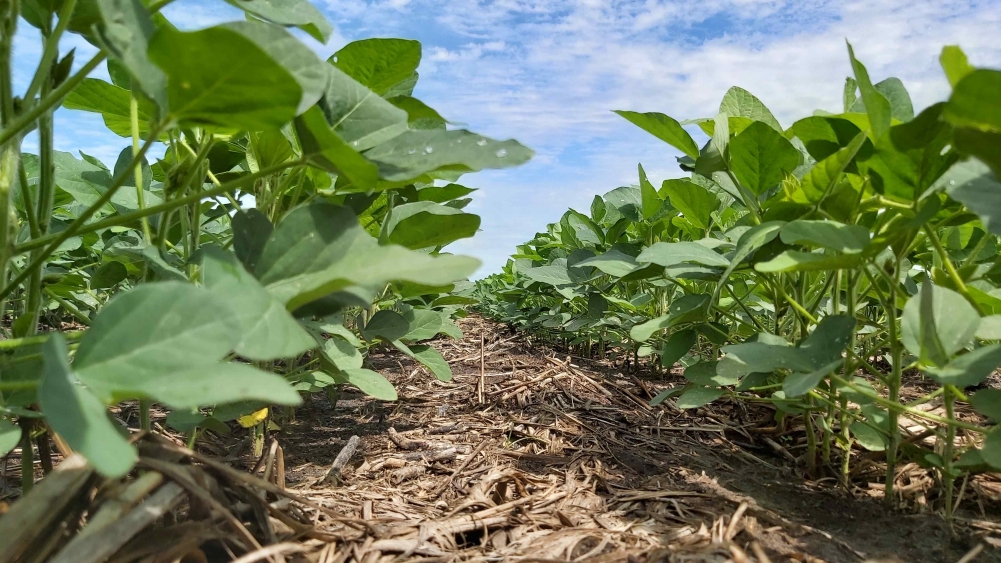


Image: Santa Soja
Published on 04/01/2024
By Roseli Andrion | Agência FAPESP – Brazilian soybean growers opted for genetically modified (GM) varieties decades ago, but demand for non-GM varieties has rebounded in recent years, reinforcing the need for more studies of the plant by research institutions and giving rise to business ventures such as Santa Soja, a Brazilian startup associated with the University of São Paulo’s Luiz de Queiroz College of Agriculture (ESALQ-USP) and São Paulo State University’s School of Agrarian and Veterinarian Sciences (FCAV-UNESP) in Jaboticabal.
The startup, which is supported by FAPESP’s Innovative Research in Small Business Program (PIPE), is developing new cultivars with the aim of offering growers high-value-added options.
Cultivars (“cultivated varieties”) are crops selected or bred by plant breeders who study the inheritance of agriculturally significant traits in order to engineer new combinations and assisted selection strategies.
Santa Soja’s researchers decided that pent-up demand for conventional soybean cultivars must exist when they realized that those available on the market were old or regionalized, uncompetitive in yield terms, and unattractive as an ongoing business for the companies concerned.
The researchers proceeded to select desired traits such as higher levels of oleic acid in soybean oil, higher resistance to the stink bug complex and Asian soybean rust, or higher protein content. The startup plans to offer farmers soybean cultivars with these specific traits.
Molecular and statistical tools are used to identify DNA markers. “This approach speeds up the genetic improvement process,” said agronomist and researcher Regina Helena Priolli, one of Santa Soja’s proprietors. “In addition, the product is ecologically correct and the technology can be associated with other innovations and appropriate crop management techniques.”
Culture change
Most soybean growers in Brazil prefer the GM option and are reluctant to switch to non-GM varieties, not least for fear of lower yields. “When we ask if they would grow the non-GM crop if yields were equally high, they say they would as long as both yields and sales prices were acceptable,” Priolli said.
GM soybean growing has risks and environmental consequences, however, if it is not done correctly (with buffer zones, for example). In these plantations, herbicide-resistant weeds are increasingly common and more toxic agrochemicals tend to be used.
Non-GM soybeans avoid these problems, but farmers want to be sure the benefits are real. “They won’t make the switch if they have doubts,” said José Baldin Pinheiro, an agronomist and head of ESALQ-USP’s Department of Genetics.
GM crops are easier to manage. “The production system is very straightforward. Growers aim to increase profit even if production falls, and they consider GM soybeans more productive and easier to manage. Nevertheless, growing numbers of consumers prefer sustainable products and are prepared to pay more for them,” Pinheiro said.
The changing behavior or culture, plus demand in the foreign market, which prefers non-GM crops, make the concept promising. “We still have some obstacles to overcome, but the technology certainly has much to contribute,” he said.
Other possibilities
The market niche for non-GM seeds is not the only possibility for the project. Santa Soja can also operate as a germplasm bank, a facility that stores and preserves the genetic diversity of different plant species for immediate or future use. This material is essential for companies that wish to benefit from superior lineages with native traits for incorporation of transgenic events.
Native traits are genes, engineered or not, with resistance to disease or insects, or with high oil content, for example. “They can be licensed to large corporations that have reduced their conventional breeding programs but are looking for high-quality material,” Pinheiro said.
The protocol can also be used for other grains. “The startup is expanding. We plan to use this molecular improvement protocol in the market for broad beans [in partnership with researchers at the Federal University of Piauí (UFPI)], as well as chickpeas and peanuts,” Priolli said. “We also plan to change the firm’s name from Santa Soja to Santa Semente.” Semente is the Portuguese word for seed.
These products are known as pulses – dried seeds of legumes, such as common beans, string beans, green peas, cowpeas, chickpeas and lentils. Beans are staples in almost every Brazilian’s diet. “Pulses have this governance footprint, associated with the environment and an alternative source of protein,” Priolli said.
The benefits for consumers are clear. “Our goal is to obtain products with higher protein content for human consumption,” she said.
“In the case of pulses, the contribution is even greater because they’re orphan plants,” Pinheiro said. “Currently there are no varieties of broad beans that have been launched in this country. Small farmers take creole varieties and grow them. We will soon have the first varieties of this crop to be offered in Brazil.”
Organization of the supply chain guarantees support for small farmers. “Chickpeas, for example, have few cultivars in Brazil. The number registered is probably less than ten. Soybeans, in contrast, have more than 500. In the case of peanuts, only two public institutions actively operate with this crop,” Pinheiro said.
The firm’s product is the seed, the item that is sold to growers. Genetic improvement enables growers to obtain these special plants. “We expect to reach a good value for maintenance of the startup in about five years, beginning with the cultivars we plan to launch by the end of this year,” Priolli said.
Because Santa Soja operates directly with seeds, farms of different sizes can have access to the product. “The technology is in the seed. Farmers don’t pay more for this, because the seed already has all the information built in. The startup’s expansion shows that the technologies and approaches we’re proposing help build new markets,” Pinheiro said.
Source: https://agencia.fapesp.br/51262